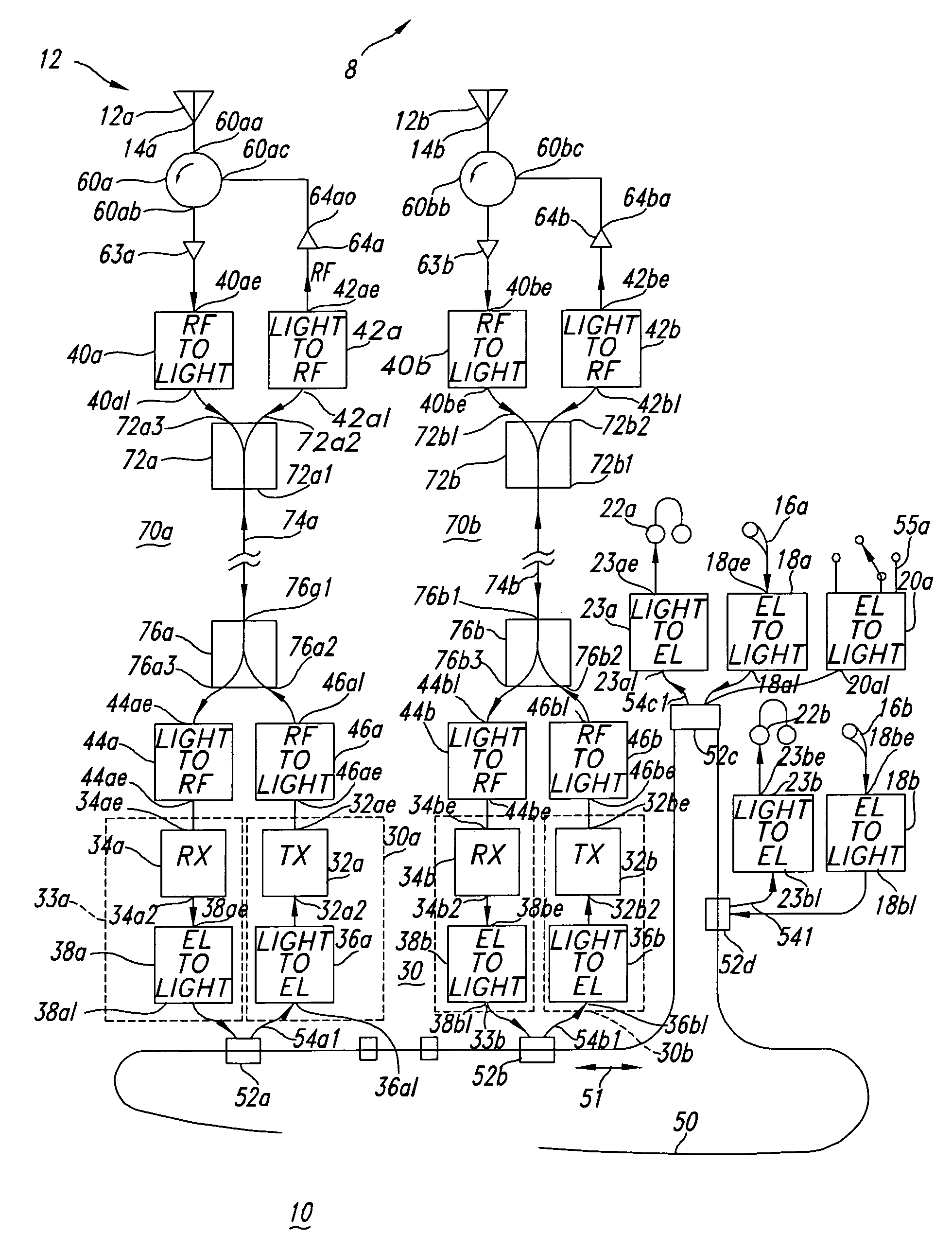Vehicular communication system
a communication system and vehicle technology, applied in the field of vehicle communication systems, can solve the problems of large dynamic range, large transmitters, receivers, etc., and achieve the effect of reducing the load of communication equipmen
- Summary
- Abstract
- Description
- Claims
- Application Information
AI Technical Summary
Benefits of technology
Problems solved by technology
Method used
Image
Examples
Embodiment Construction
[0014]In FIG. 1, a communication system 10 includes a set 12 of antennas 12a, 12b, . . . , each of which includes a “feed” port 14a, 14b . . . . Those skilled in the art know that antennas are transducers, which transduce signals between unguided electromagnetic form in free space, indicated by the arrow 8, and guided electrical waves at the ports 14a, 14b. . . . Those skilled in the art also know that antennas are reciprocal devices, which have the same characteristics, such as beam width, pattern shape, and gain, in both transmitting and receiving modes of operation. The “feed” terminology for the port of an antenna is from an earlier time, when the reciprocity of transmission and reception were not as well known, but such language is now standard. The feed port is the port to which signals are applied for transmission, and from which received signals are taken.
[0015]In FIG. 1, the feed port 14a of antenna 12a is connected to an antenna port 60aa of a circulator 60a. Received elec...
PUM
 Login to View More
Login to View More Abstract
Description
Claims
Application Information
 Login to View More
Login to View More - R&D
- Intellectual Property
- Life Sciences
- Materials
- Tech Scout
- Unparalleled Data Quality
- Higher Quality Content
- 60% Fewer Hallucinations
Browse by: Latest US Patents, China's latest patents, Technical Efficacy Thesaurus, Application Domain, Technology Topic, Popular Technical Reports.
© 2025 PatSnap. All rights reserved.Legal|Privacy policy|Modern Slavery Act Transparency Statement|Sitemap|About US| Contact US: help@patsnap.com



